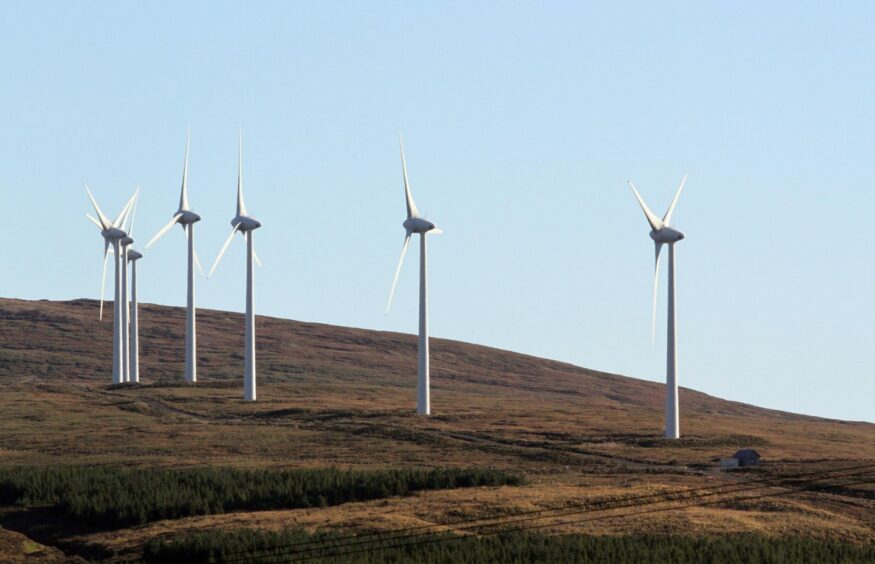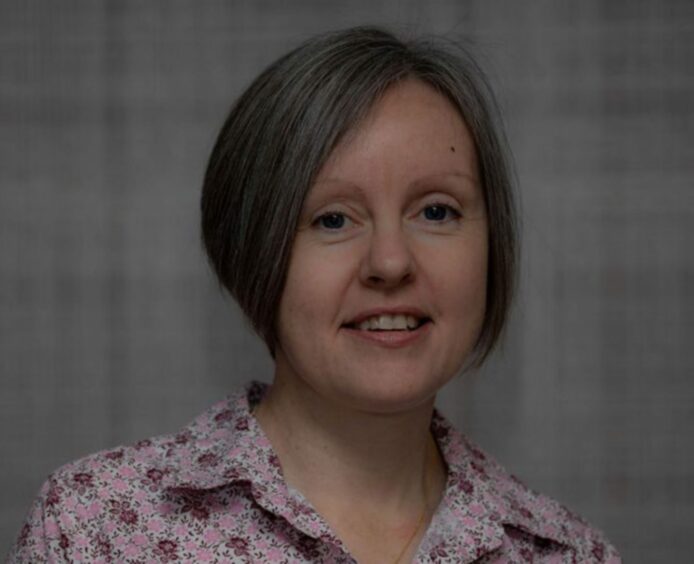
Pressure is growing for a public inquiry into the “onslaught” of windfarms and power lines earmarked for Skye.
Nine wind farm projects are proposed for the island, along with SSEN’s planned overhead line reinforcement project (OHL).
But this “industrialisation” has no purpose, as the power that could be generated is not required on Skye or in wider Scotland, according to campaigner Faye MacLeod.
Ms MacLeod, who has set up the Skye Wind website, has urged the Just Transition Commission to call an inquiry.
This follows previous calls from campaign group Communities B4 Power Companies (CB4PC) and both the Portree and Braes Community Trust and Portree and Braes Community Council.
‘Bombardment’ of applications
CB4PC wants a decision by a joint meeting of Highland Council’s north and south planning committees not to object to the proposed power line from Skye to Fort Augustus reconsidered.
Councillors decided not to object if a specific route, that preferred by SSEN, was followed.
Additional information has since been submitted and will be reported back to committee later this year.
Denise Davis from CB4PC, which is also campaigning against new power lines around Beauly, says the decision led to a “bombardment” of onshore wind farm applications.
A public local inquiry, she argues, would allow SSEN to be cross examined in a public forum.
Meanwhile, Faye MacLeod says the wind farms and power line proposed for Skye are neither needed nor justified.
She said: “This elephant in the room needs to be called out.
“We cannot possibly use or export all the Scottish wind projects now in development and planning without a massive expansion in the national grid.
“Therefore, there is absolutely no purpose to building the massive increase in Skye’s OHL and Skye windfarms and any further windfarms not yet having planning approval.
“This misalignment between the windfarm developments in Scotland and the lack of export capacity has to result in a halt to the continued onslaught on Scotland by windfarm developers (mainly foreign) who are the only winners in this situation.
“There is no justification or need for new overhead lines or new windfarms on Skye.”
Scotland’s ‘wind energy production already exceeds needs’
She said the Scottish Government has a target of producing 20GW of onshore wind energy by 2030.
But, she argues, in 2022 there was already 8.7GW of onshore wind capacity and a further 11GW of projects approved or in development.
“That means that the 2030 target is now likely to have been exceeded, with further projects having been approved since that time.”
Ms MacLeod says Scotland’s peak electricity demand is 4.4GW-5GW, rising to an expected 5.3GW in 2030 and 9.4GW in 2050.
“It can easily be seen that Scotland’s existing onshore wind energy production already exceeds Scotland’s requirements.”
She said surplus electricity generated in Scotland will be sent to England, but existing transmission connections southward provide only 6.1GW of capacity.
“So by 2030 we will have at least 20GW of onshore wind power, with Scottish domestic use of just 5.3GW, but usable export capacity to England of 6.1GW.
“That leaves 8.6GW of surplus onshore wind energy, but with no customers.
“This is a huge waste of energy production with no market or end users to consume this electricity.”
She said the planned wind farms and OHL will not be able to make any contribution to Scotland’s net zero ambition without at least a doubling of the National Grid’s transmission capacity to England.
“There is a huge and growing disconnect between Scotland’s energy strategy and the UK Grid capacity.”
Inquiry needed ‘as a matter of urgency’
In a letter to Professor Jim Skea, outgoing chairman of the Just Transition Commission, Ms MacLeod also compares the power companies’ profits to community benefits.
If all windfarms are consented on Skye, communities would benefit by around £72 million over 25 years at the current rate of £5,000 per megawatt.
But she calculates the future revenue from the wind farms could be more than £7.2 billion over the same time, with £2.9 million profit.
“Contrast £72 million to the community of Skye versus the £2.9 billon extracted by primarily foreign shareholders. This does not feel even close to a Just Transition.”
She appealed to the commission to intervene and deliver a public inquiry “as a matter of urgency”.
Drew Millar, chairman of the council’s north planning applications committee, said an inquiry could be called if the Scottish Government chooses a different option for the Skye power line route.
“If there was an inquiry into what’s happening in future, many people on Skye would be happy with that.
“It would make everything transparent and it might be easier to understand the magnitude of what the island is facing if everything gets approved.”
The Scottish Government said it is aware of development proposals on Skye, including live applications.
A spokesman said: “It would not be appropriate for us to make comment on the handling or merits of specific proposals at this time.”
Stringent environmental regulations
He said Scotland has some of the most extensive renewable generation capabilities in Europe with which to accelerate the just transition to net zero.
“We also have some of the most stringent environmental impact regulations anywhere in the world and our planning and consenting systems ensure that local communities can have their say.”
Nick Sharpe, director of communications and strategy at Scottish Renewables, said not all projects in development will make it to construction.
“Therefore the entire existing pipeline of onshore wind farms, as well as new sites and the repowering of existing wind farms, is essential if we are to achieve the volume of capacity we need to meet our ambitious net-zero targets.”
He said the planning system is designed to give a voice to everyone with a stake in the process.
Projects also go through a rigorous process considering all the environmental and economic impacts.
SSEN Transmission says the existing Skye-Fort Augustus line needs upgraded as it is fast reaching the end of its life.
This was demonstrated by two faults earlier this year which saw more than 20,000 customers lose power.
A spokeswoman said as well as maintaining network reliability in Skye and the Western Isles, the replacement line will enable the connection of new renewable electricity generation to support net zero and help secure the country’s future energy independence.”
She said following the council’s decision not to object to its application, the outcome will be determined by the government.
The spokeswoman added that SSEN is committed to working with the community and others to deliver infrastructure “which is essential to keep the lights on and support the transition to net zero.”
Recommended for you

 © Supplied by Faye MacLeod
© Supplied by Faye MacLeod